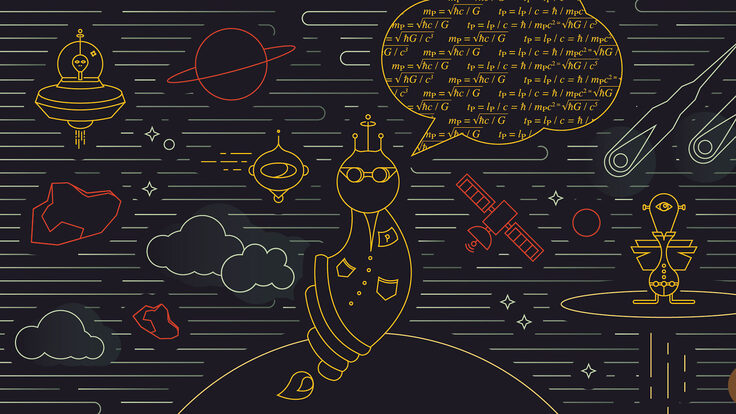New CERN director-general Rolf-Dieter Heuer gave his first presentation to the CERN community this morning in Geneva, Switzerland. Heuer's talk, well received by a standing-room-only crowd, outlined his vision for the particle physics laboratory's next five years. A summary is below, or the full one-hour presentation can be viewed, along with powerpoint slides, online.
LHC repair, restart
No new schedule for the LHC restart has been issued; the current plan still shows the LHC being cold and ready for beams again by mid-July. Things may change by mid-February, however. Heuer hopes that a final schedule addressing the time to complete repairs, and the duration, energy, and luminosity for collisions in 2009, will be issued after a meeting in Chamonix, France, scheduled for the first week in February. The LHC repair cost, including the resupply of spare magnets, was estimated at 30-40 million Swiss Francs. Two additional external assessment groups are being set up in the wake of the incident last September: one to examine the LHC's quench protection system and another to investigate risk analysis. Another task force will re-examine the safety of personnel in the underground areas associated with the LHC.
Open Communication
Heuer outlined a new approach to open communication between CERN management and the community. Status reports on the LHC will be published regularly in the weekly CERN Bulletin, and a policy of fast and direct information flow to the CERN community will be implemented.
Accommodating users
As the world's particle physicists focus on the LHC, CERN will have to accommodate the needs of an ever-increasing number of users, physicists not employed by CERN who spend anywhere from several days to many years at the laboratory working on experiments at the facility. At last count CERN had 9500 registered users. Ongoing efforts to create more space for physicists include an extension to the famous Building 40 that provides office space for many scientists from the ATLAS and CMS experiments, and a temporary 300-seat auditorium. Future plans may include an extension to the lab's main cafeteria and even a new building with a 1000-seat auditorium, although CERN would need to find outside funding for the latter.
Looking towards the future
Heuer's most far-reaching goals address the future of CERN--making it into a global laboratory--and the future of particle physics worldwide. Noting that funding has been "not increasing" for the past several years while projects become larger and more expensive, he stated that all countries with investments in particle physics should come together to set a global agenda for the field. In his vision, particle physics expertise and long-term stability and support for the field need to be maintained in the three main regions (the Americas, Asia, and Europe). CERN must engage all countries and continue to foster developing countries in their effort to become involved in particle physics. In response to a question at the end of the talk regarding a possible increase in the number of CERN Member States, he said that, while no decisions have been made, there is no language in CERN's founding convention that states that Member States must be European.
In the near term, a strategy workshop will take place in late spring at which the future of the CERN non-LHC accelerator-based program will be assessed. Heuer noted that the ideal time to propose new programs is directly after discoveries are made at the LHC (estimated to be in the 2010-2012 time frame), rather than 5 to 10 years later.
More concrete goals for the next few years include building a new, "green" computing facility on the CERN site, creating an Analysis Centre for LHC Physics at CERN, and becoming more proactive in knowledge and technology transfer.
New CERN organization
Every CERN Director General reorganizes the laboratory structure to their liking. Heuer's top-level management structure is summarized in this organization chart. The Coordinator for External Relations is a new post, in keeping with Heuer's strategy to move CERN towards a global physics laboratory.







